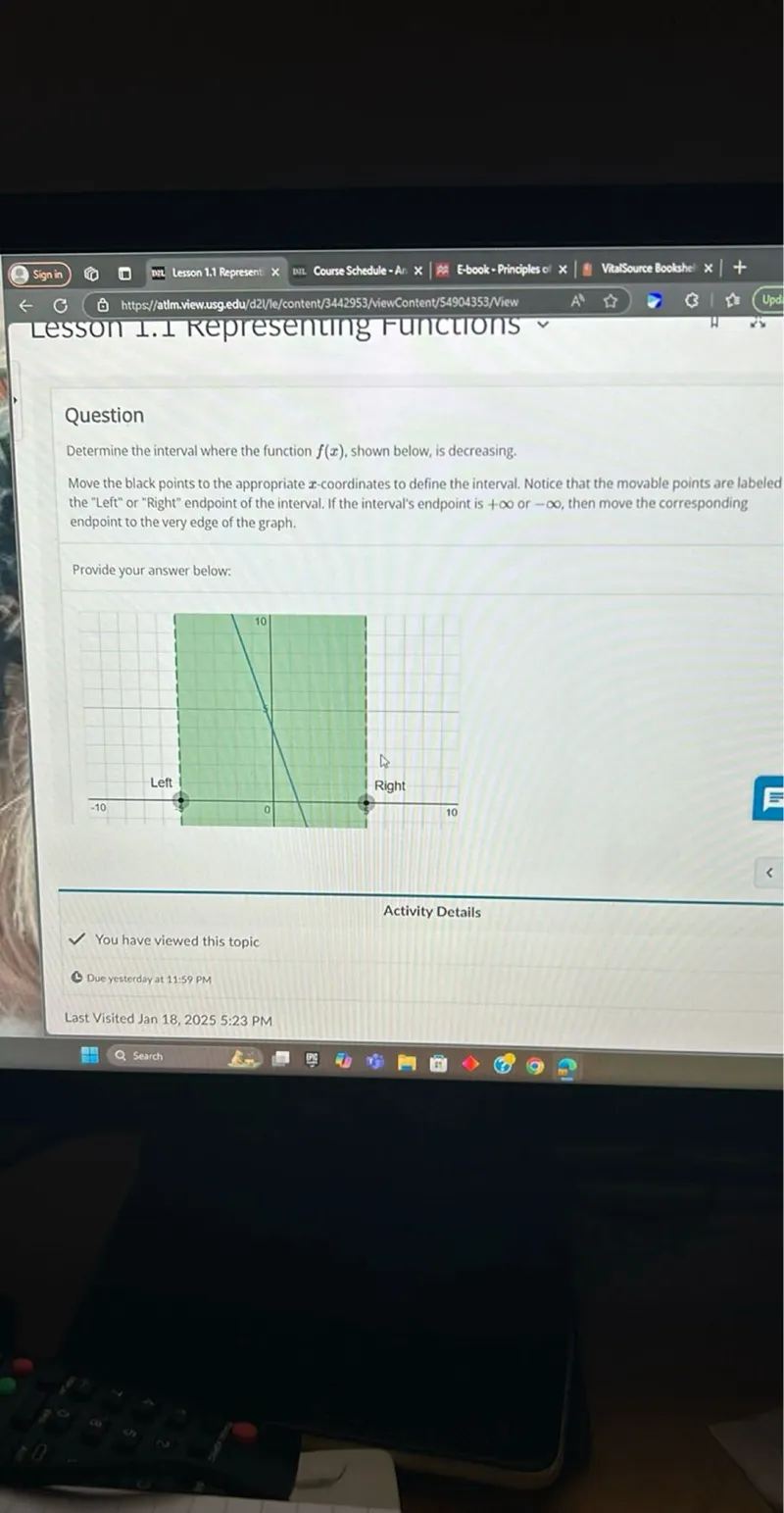Questions: Determine the interval where the function f(x), shown below, is decreasing. Move the black points to the appropriate x-coordinates to define the interval. Notice that the movable points are labeled the "Left" or "Right" endpoint of the interval. If the interval's endpoint is +∞ or -∞, then move the corresponding endpoint to the very edge of the graph.

Transcript text: Determine the interval where the function $f(x)$, shown below, is decreasing.
Move the black points to the appropriate $\boldsymbol{x}$-coordinates to define the interval. Notice that the movable points are labeled the "Left" or "Right" endpoint of the interval. If the interval's endpoint is $+\infty$ or $-\infty$, then move the corresponding endpoint to the very edge of the graph.





